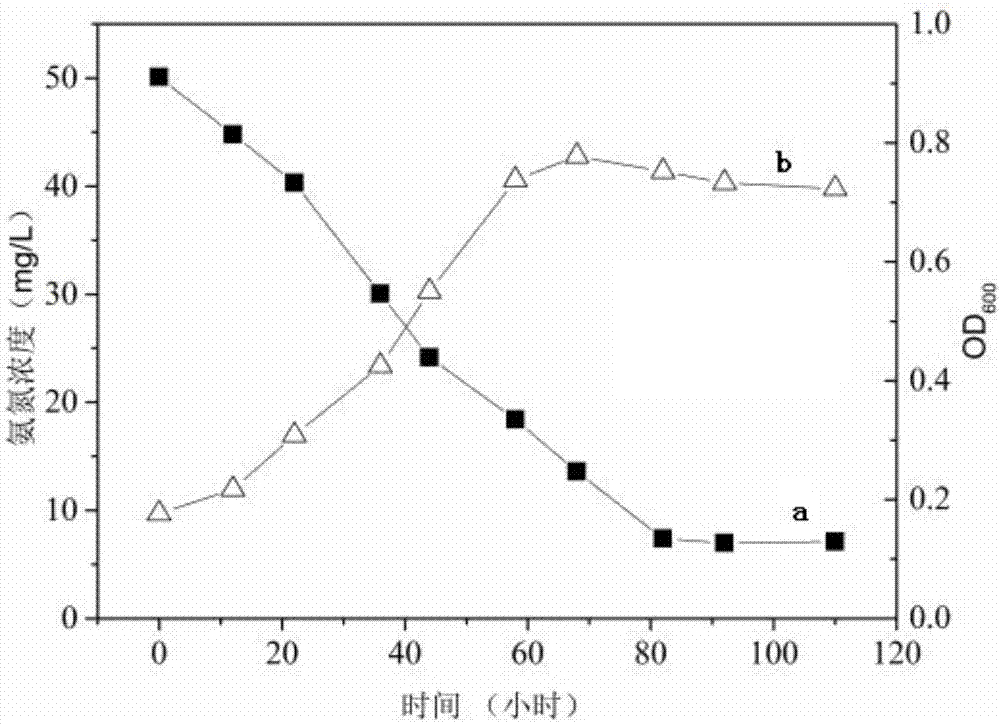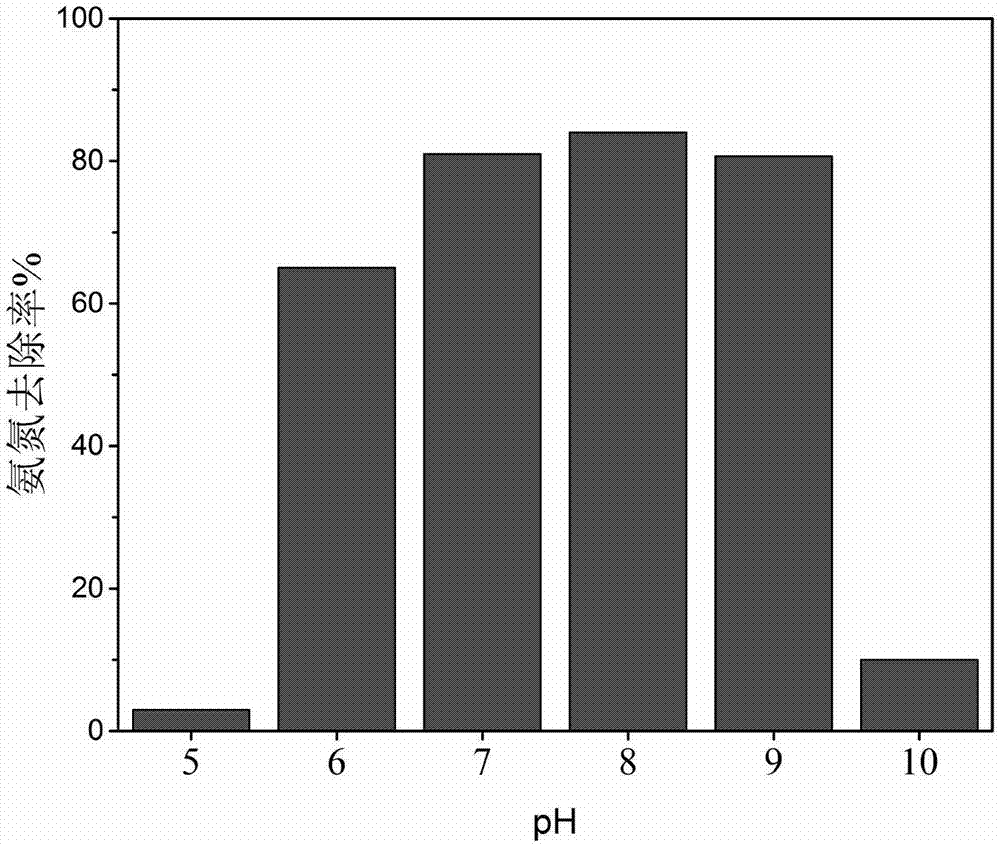Low-temperature-resistance nitrobacteria and application thereof
A technology of nitrifying bacteria and low temperature resistance, applied in the direction of bacteria, chemical instruments and methods, biochemical equipment and methods, etc., can solve the problem that denitrification bacteria are not suitable for low temperature water bodies
- Summary
- Abstract
- Description
- Claims
- Application Information
AI Technical Summary
Problems solved by technology
Method used
Image
Examples
specific Embodiment approach 1
[0013] Embodiment 1: A low-temperature-resistant nitrifying bacterium in this embodiment is Pseudomonas mohnii.M-8, which is preserved in the General Microbiology Center of China Microbiological Culture Collection Management Committee, and the preservation address is Beichen, Chaoyang District, Beijing No. 3, No. 1 Yard, West Road, the preservation date is November 20, 2017, and the preservation number is: CGMCCNo.14936.
[0014] In this embodiment, high-efficiency low-temperature-resistant nitrifying bacteria screened out from fillers in Chinese-style reactors that treat Songhua River water are identified as Gram-negative bacteria and facultative anaerobic bacteria with a growth temperature of 2-35°C. The optimum temperature is 25-30°C, the length of the bacteria is 1-1.5 μm, the width is 0.5-1 μm, it is short rod-shaped, without spores. The colony is milky white translucent regular circle with a radius of 1-2mm, moist and shiny.
[0015] The DNA of Pseudomonas mohnii.M-8 wa...
specific Embodiment approach 2
[0017] Embodiment 2: The application of a strain of low-temperature-resistant nitrifying bacteria in this embodiment refers to the application of low-temperature-resistant nitrifying bacteria in the treatment of low-temperature water bodies.
[0018] In this embodiment, Pseudomonas mohnii.M-8 can grow at 2-35° C., and realize nitrification reaction in an aerobic state. At 2°C, in an aerobic state, with an initial ammonia nitrogen concentration of 50 mg / L, the bacteria NH 4 + The removal rate of -N was 92%. During the reduction of ammonia nitrogen, there was no accumulation of nitrite nitrogen and nitrate nitrogen, indicating that the bacteria could directly convert ammonia nitrogen into nitrogen and other gases. Compared with other low-temperature resistant strains, this strain has the advantages of adapting to lower temperature and higher denitrification efficiency.
specific Embodiment approach 3
[0019] Embodiment 3: This embodiment differs from Embodiment 2 in that: the application of low-temperature-resistant nitrifying bacteria in denitrification of low-temperature water bodies. Others are the same as in the second embodiment.
PUM
| Property | Measurement | Unit |
|---|---|---|
| length | aaaaa | aaaaa |
Abstract
Description
Claims
Application Information
 Login to View More
Login to View More - R&D
- Intellectual Property
- Life Sciences
- Materials
- Tech Scout
- Unparalleled Data Quality
- Higher Quality Content
- 60% Fewer Hallucinations
Browse by: Latest US Patents, China's latest patents, Technical Efficacy Thesaurus, Application Domain, Technology Topic, Popular Technical Reports.
© 2025 PatSnap. All rights reserved.Legal|Privacy policy|Modern Slavery Act Transparency Statement|Sitemap|About US| Contact US: help@patsnap.com



